Description
Building on the intellectual and political momentum that established the Critical Ethnic Studies Association, this Reader inaugurates a radical response to the appropriations of liberal multiculturalism while building on the possibilities enlivened by the historical work of Ethnic Studies. It does not attempt to circumscribe the boundaries of Critical Ethnic Studies; rather, it offers a space to promote open dialogue, discussion, and debate regarding the field’s expansive, politically complex, and intellectually rich concerns. Covering a wide range of topics, from multiculturalism, the neoliberal university, and the exploitation of bodies to empire, the militarized security state, and decolonialism, these twenty-five essays call attention to the urgency of articulating a Critical Ethnic Studies for the twenty-first century. Read more
Review “This ambitious new collection from the Critical Ethnic Studies Association successfully stakes out important intellectual and political stances in the field of ethnic studies.”―N. Barnd, Choice”The ground-breaking aspect of this volume is that it underscores the urgency to train new scholars and thinkers that can help reformulate and rethink complex issues such as racism, ethnicity and hate crimes, all characteristics of the zeitgeist.”―Natascha Adama, Ethnic and Racial Studies Review “Critical Ethnic Studies: A Reader brings together some of the best established and rising scholars to provide an ambitious, rigorous, and timely account of the ongoing violences of settler colonialism, racialization, and exploitation in the midst of neoliberal appropriation and affirmation. At once an invaluable teaching resource and a comprehensive re-mapping of the avenues of inquiry in the field, this momentous work confirms the urgency and importance of Ethnic Studies scholarship for a changing world.” — Grace Kyungwon Hong, author of ― Death beyond Disavowal: The Impossible Politics of Difference About the Author The members of the Critical Ethnic Studies Editorial Collective are Nada Elia, Independent Scholar; David M. Hernández, Assistant Professor of Latina/o Studies at Mount Holyoke College; Jodi Kim, Associate Professor of Ethnic Studies at the University of California, Riverside; Shana L. Redmond, Associate Professor of American Studies and Ethnicity at the University of Southern California; Dylan Rodríguez, Professor of Ethnic Studies at the University of California, Riverside; and Sarita Echavez See, Associate Professor of Media and Cultural Studies at the University of California, Riverside. Excerpt. © Reprinted by permission. All rights reserved. Critical Ethnic StudiesA ReaderBy Nada Elia, David M. Hernández, Jodi Kim, Shana L. Redmond, Dylan Rodríguez, Sarita Echavez SeeDuke University PressCopyright © 2016 Duke University PressAll rights reserved.ISBN: 978-0-8223-6127-5ContentsPreface, CRITICAL ETHNIC STUDIES EDITORIAL COLLECTIVE, Introduction: A Sightline, CRITICAL ETHNIC STUDIES EDITORIAL COLLECTIVE, I. The Multicultural Nation and the Violence of Liberal Rights, ONE. “As Though It Were Our Own”: Against a Politics of Identification SHANA L. REDMOND, TWO. Juan Crow: Progressive Mutations of the Black-White Binary JOHN D. MÁRQUEZ, THREE. Can the Line Move? Antiblackness and a Diasporic Logic of Forced Social Epidermalization JOÃO H. COSTA VARGAS, FOUR. (Re)producing the Nation: Treaty Rights, Gay Marriage, and the Settler State LINDSEY SCHNEIDER, FIVE. Hateful Travels: Queering Ethnic Studies in a Context of Criminalization, Pathologization, and Globalization JIN HARITAWORN, SIX. Critical Contradictions: A Conversation among Glen Coulthard, Dylan Rodríguez, and Sarita Echavez See MODERATED BY SARITA ECHAVEZ SEE, II. Critical Ethnic Studies Projects Meet the Neoliberal University, SEVEN. A Better Life? Asian Americans and the Necropolitics of Higher Education LONG T. BUI, EIGHT. Notes from a Member of the Demographic Threat: This Is What “We Are All Palestinians” Really Means NADA ELIA, NINE. Restructuring, Resistance, and Knowledge Production on Campus: The Story of the Department of Equity Studies at York University TANIA DAS GUPTA, TEN. “The Goal of the Revolution Is the Elimination of Anxiety”: On the Right to Abundance in a Time of Artificial Scarcity DAVID LLOYD, ELEVEN. Subjugated Knowledges: Activism, Scholarship, and Ethnic Studies Ways of Knowing DAN BERGER, III. The Body and the Dispensations of Racial Capital, TWELVE. Becoming Disabled / Becoming Black: Crippin’ Critical Ethnic Studies from the Periphery NIRMALA EREVELLES, THIRTEEN. Arts and Crafts, Elsewhere and Home, Mama & Me: Defying Transnormativity through Bobby Cheung’s Creative Modalities of Resignification BO LUENGSURASWAT, FOURTEEN. Indra Sinha’s Melancholic Citizenship: Marking the Violence of Uneven Development in Animal’s People ANDREW UZENDOSKI, FIFTEEN. Cocoa Chandelier’s Confessional: Kanaka Maoli Performance and Aloha in Drag STEPHANIE NOHELANI TEVES, IV. Militarism, Empire, and War: The Security State and States of Insecurity, SIXTEEN. Surrogates and Subcontractors: Flexibility and Obscurity in U.S. Immigrant Detention DAVID M. HERNÁNDEZ, SEVENTEEN. Of “Mates” and Men: The Comparative Racial Politics of Filipino Naval Enlistment, circa 1941–1943 JASON LUNA GAVILAN, EIGHTEEN. The Thickening Borderlands: Bastard Mestiz@s, “Illegal” Possibilities, and Globalizing Migrant Life GILBERTO ROSAS, NINETEEN. Up in the Air and on the Skin: Drone Warfare and the Queer Calculus of Pain RONAK K. KAPADIA, TWENTY. Empire’s Verticality: The Af-Pak Frontier, Visual Culture, and Racialization from Above KEITH P. FELDMAN, V. Fugitive Socialities and Alternative Futures, TWENTY-ONE. Decolonization, “Race,” and Remaindered Life under Empire NEFERTI X. M. TADIAR, TWENTY-TWO. Critical Ethnic Studies, Identity Politics, and the Right-Left Convergence ROBERT STAM AND ELLA SHOHAT, TWENTY-THREE. Césaire’s Gift and the Decolonial Turn NELSON MALDONADO-TORRES, TWENTY-FOUR. Checkered Choices, Political Assertions: The Unarticulated Racial Identity of La Asociación Nacional México-Americana LAURA PULIDO, TWENTY-FIVE. Racializing Biopolitics and Bare Life ALEXANDER G. WEHELIYE, Bibliography, Contributors, Index, CHAPTER 1″As Though It Were Our Own”: Against a Politics of IdentificationSHANA L. REDMONDOnly a handful of the millions of people in this vast place are aware that the fate intended for you … is a fate which is about to engulf them, too. — JAMES BALDWIN, “An Open Letter to My Sister, [Miss] Angela Davis”There is a disturbing tendency within liberal intellectual and political circles to un(der)critically identify with the targets of racism and violence or the subjects who become the vehicles of its scholastic critique. Proxy narratives with those afflicted populations take liberties with the histories and present of power and manifest themselves not as solidarities but as violent displacements, as the narrator becomes the subject under examination who in turn shields from view those who are most vulnerable. While this practice may be enacted or witnessed as a protective measure, its employment has recently developed as an end in and of itself. In their attempts to mobilize sympathy, justice-redress actors who devise slogans of identification like “I am Troy Davis” — a meme developed in the months leading to Davis’s 2012 execution — are unwittingly contributing to the tidy demise of their subjects. Identification rhetoric signals a relation to endangered women and men that takes for granted the structures that allow for and welcome its articulation. By adopting the status of imperiled life, liberal actors disappear particular negotiations and struggles, thereby allowing the processes that contain and legitimize that death making to remain untrammeled.Although not wholly new, this practice was redefined and rejuvenated in the past decade. Identification as rather than with the subject of violence is made imminently passible in the present by the myth birthed of a failed capitalism: postracialism. In a desperate bid to stem the tide of the dispossessed masses, the state distracts us with charming fictions to convince us that our experiences and fates are the same — that there is no difference produced from capital’s expansion or regression and no histories or future of its exception. From this reorientation developed a political ethos that ostensibly critiqued both capitalism and the “declining significance of race” theory even as it employed those rhetorics and logics for alternative visions of social change. The election of the nation’s first black president, Barack Obama, in 2008 inaugurated a more mature language and visual practice of intense identification in response to acts of state violence and white vigilantism. There are embedded privileges within this practice that were enabled by his presidency — privileges that rely on and reinforce the very structures of difference that his election was announced to resolve and that movement actors attempt to dismiss through claims to sameness with those who are too often deceased. Black (and Other) death and its proximity is the precondition for a politics that has, notably since Obama, used identification to evidence the continued ruptures of race, class, nationality, and, to a lesser extent, gender, within U.S. society. While these deep and enduring cleavages require public displays and performances as acts of evaluation and refusal, I argue that the method used as critique subscribes to and relies upon long-standing violences against the African-descended in the United States that further dismiss the particularities of black existence and thereby devalue black life.I highlight here two instances that epitomize this burden of identification as a means of liberal political advance. It is worth noting that what I articulate as liberal is, to the minds of the actors, often considered radical or even revolutionary. I seek to demonstrate the practices that dismantle this promise and disarticulate it from previous strategies of defense. The execution of a Georgia death row inmate, Troy Davis, and the murder of a Florida teenager, Trayvon Martin, were the catalytic events that highlight this troubled political method and throw its premise into crisis. By adopting their dead bodies, a liberal populace was able to both exorcise and exercise their racial and/or gender privilege in order to draw attention to the repeated violence that otherwise signals the healthy function of a white supremacist order. Their mobilizations of sympathy, however, did not disrupt this national vitality; they instead condoned it by isolating these events as spectacular and extraordinary when they are in fact quotidian, always already existing as the everyday possibility of life and death for black communities. Traditions of black response to incarceration and death largely remain evacuated from contemporary national discourses on punishment. My work here relies on one activist-thinker who, under great threat, theorized the conditions of one of the century’s icons alongside the nation that held her captive. James Baldwin’s “An Open Letter to My Sister, [Miss] Angela Davis” provides a frame for understanding the necessity of alliance and the impossibility of identification. His provocations and warnings offer correctives that may well salvage the impulses that do not yet but could lead to actionable outcomes and effective structural change.Published in November 1970, “An Open Letter” was a deeply historical and impassioned announcement of solidarity with the political activist Angela Davis and those like her who remained unnamed, unknown, and unclaimed. At the moment of the essay’s publication, Davis was none of those things; she was a cause célèbre after going underground in flight of charges for aggravated kidnapping and first-degree murder. The official record reasoned that she be charged for her purchase of guns that were later used in a shootout with California police. Although she was not present at the event, the state of California argued that Davis was as responsible as those who pulled the trigger, leading J. Edgar Hoover of the Federal Bureau of Investigation to add her name to the nation’s “Ten Most Wanted” list. Facing the possibility of death after her capture in October, Davis continued to publicly expose the racist violences of the state by writing and offering interviews from jail. As I discuss later, her work on both sides of the prison wall accelerated not only her own defense but also that of the imprisoned black women with whom she communed. Baldwin brought his own exposure to the case, employing the hunt for Davis as a moment of intervention into (inter)national conversations on race and punishment, gender and war making, epistemology and ontology. His efforts in “An Open Letter” connect the variety of regimes and structures that I briefly investigate as the pieces constitutive of the problematic of identification within contemporary political mobilizations.They appear to glory in their chains; now, more than ever, they appear to measure their safety in chains and corpses. — JAMES BALDWIN, “An Open Letter to My Sister, [Miss] Angela Davis”Black and brown death as a precondition for white life was put on full display on May 2, 2011, with the murder of Osama bin Laden. The Navy SEAL invasion of his compound, in excess of numerous international laws, was the spectacle through which the United States again announced itself as exceptional, powerful, and vengeful. Although bin Laden’s murder was tied to and justified by a discursive and proto-juridical matrix labeled “national security,” the domestic murders of Troy Davis (September 7, 2011) and Trayvon Martin (February 26, 2012) were suspended within a national common sense of crime and punishment when they are better situated inside of the logics that made bin Laden’s murder possible: the expansion of the security state, which, in addition to growing U.S. military presence throughout the world, enacts domestic warfare by building prisons with unprecedented rapidity and promoting the gated community as an oasis of safety and exclusivity. The death of black women and men through state violence, legal and extralegal, is represented in the mass caging of human beings and the eradication of the commons, no less than through the international expansion of the war complex. It is precisely the acceleration and proliferation of an armed U.S. citizenry — whether through the nation’s military, community paramilitary organizations like the Minutemen Project, or individual citizens — that condones and normalizes death as an appropriate punishment and response to difference.Crime is the mobilizing language that encodes the two scenarios that I discuss here. The word is made impenetrable as a way to forestall criticism of state violence even though it is dialogic — in conversation with a wider field of constructions. As Nils Christie has detailed, “Crime does not exist. Crime is created. First there are the acts. Then follows a long process of giving meaning to these acts.” Ruth Wilson Gilmore argues against a common sense that links “crime” with the “prison” because “what counts as crime in fact changes, and what happens to people convicted of crimes does not, in all times and places, result in prison sentences. Defined in the simple terms of the secular state, crime means a violation of the law. Laws change, depending on what, in a social order, counts as stability, and who, in a social order, needs to be controlled.” This domestic warfare may well be considered the laboratory for international war making, such that it is in the logics and procedures of settler colonialism and chattel slavery that one finds, for example, the design of enforced enclosures that redline poor and of color communities from goods and services, or the extralegal and long-term captivity of subsidiary citizens or noncitizens at Pelican Bay State Prison or Guantánamo Bay Detention Camp.These long and interdependent histories are both more available and tenuous within the discursive lexicon of the university, which employs a number of activist-scholars of the prison but is often an uneasy space that brings with it concerns and realities that exacerbate the injustices that these scholars have laid bare. From university hedge fund investment in private prisons to the pervasive, university-funded patrolling of the black, brown, and poorer neighborhoods contiguous with their campuses, the experience and reality of violence is never too far from the work of the places to which we are sent to learn. Knowledge production in some ways works as a foil for these experiences of difference. As Roderick Ferguson argues, the university has been not only the product of the brutalities of the state and capital but is a unique site of experimentation for its goals of minority body and discourse integration. Ethnic studies and women’s studies have become part of the “archival economy” of power, thereby “producing formulas for the incorporation rather than the absolute repudiation of difference, all the while refining and perfecting its practices of exclusion and regulation.” Just as the United States in 1964 labored to legislatively fold an unruly blackness into itself, so too have universities sought to recuperate and reprogram the energies of a rebellious student body who demanded the intellectual venues to study and validate their experiences and knowledge. This move to incorporation offers a structural precedent and training ground for the political practice of identification that I examine here. The black bodies on display in my scenarios are not popularly positioned as agents in the same way as the striking undergraduate students of the 1960s; they are rather the collateral damage of this explosive moment in the institutionalization of Other knowledge formations. The failures of the incorporative agendas of the state, capital, and the university are on full display in the violent deaths of Davis and Martin, and the institutional representation of black communities in U.S. colleges and universities over the past fifty years has done little to stem the tide of disfranchisement that makes black death widely permissible. The evidence of an assimilable black body in the university, government, and law enforcement has further distinguished those good from bad in the rhetoric and legislation of the state that has reconfigured the landscapes and sightlines of its exclusions, in the process growing the numbers of cages and caskets.The haphazard availability of knowledges based in communities of color, free from rigorous institutional investment or community cooperation, facilitates a false familiarity as all parties within increasingly uniform higher education institutions are somehow made universally recognizable and heard. Students often are encouraged to understand black life through their own experiences of loss or frustration; only rarely do they engage it as the result of a distinct logic of abuse and exclusion. My experiences of this phenomenon in the classroom include students whose limited recognition of policing oppressions is filtered solely through their liberal investments in the legalization of marijuana or those students who, in response to discussions of the 1994 Rwandan genocide, cannot muster a response but through the history and language of the Jewish Holocaust. While we all approach the world through unique lenses and investments, this is too often where the students and their elders begin and end their discussions; the experiences of the African-descended are not considered distinct from their own, in the process abandoning the histories that position black people in discrete ways. Black representation then stands in for substance, and inclusion masquerades as equality. The university constructs and applauds these moves as it announces its diverse future through a shared imaginary. “Part of the signature achievements of these affirmative modes of power,” according to Ferguson, “was to make the pursuit of recognition and legitimacy into formidable horizons of pleasure, insinuating themselves into radical politics, trying to convince insurgents that ‘your dreams are also mine.'” These working-class, black, brown, gendered, and queer dreams then are evacuated in the process of an artless identification. Instead of true parity, transference occurs where whiteness is validated for its dimensionality and sympathetic embrace of a hollowed-out minority life. These beliefs and practices invaded the ranks of progressive political mobilizations, where they became the method of response to the violences of the state and its excess vigilantism, thereby producing a modality of political “radicalism” coalesced not by robust engagements with antiblack racism but instead by facile identifications with vulnerable peoples.The relationship between knowledge production, politics, and identity is evidenced in the sociopolitical fights within and over contemporary Arizona. The 2010 Support Our Law Enforcement and Safe Neighborhoods Act, or Arizona Senate Bill 1070 (SB 1070), expanded police power in the streets and allowed for immigrant profiling in order to check women and men for documentation of U.S. citizenship. Within six months of SB 1070, Arizona’s attorney general Tom Horne declared Tucson’s Mexican American studies program illegal. The proximity of these two policies exhibits their interrelatedness, which in combination stunts the minds and patrols the bodies of the nation’s Others. Unions and community groups around the nation called necessary attention to the state and its escalation of terror against Latinas/os. The Todos Somos Arizona (We are all Arizona) campaigning that occurred in the wake of SB 1070 worked to make a national coalition of similarly positioned people, despite the fact that it was a particular condition of (non)being legislated for Latinas/os. SB 1070 sought to legally codify the distinct and concentrated difference of brown bodies, yet the sloganeering used to respond to those experiences attempted to make universal a specifically situated set of containments and abuses. As I will soon discuss, this movement was compromised by their efforts to gain legitimacy from black disidentification, thereby demonstrating not solidarity but rather the widely held and politically resonant structures of difference.The intention behind the Todos Somos Arizona campaign is duly noted. Its project is to involve the entire nation in the public life of Arizona’s residents, to implicate everyone in the fascist practices of the state, to rally all sympathies and empathies. There are, however, problems with this formulation. As I mentioned, the impact of SB 1070 was unevenly experienced. The spectrum was literally one of life and death, and those who marched against the bill included a sizable number on the safe end of the spectrum — those with the inalienable right to life. The mobilization of those whose rights and bodies are respected is a savvy tactic when highlighting the threat of violence, yet the right to safety that is accessible to some and not others remains underdeveloped in the rhetoric and public strategizing of many contemporary social movement formations. The Occupy Wall Street movement (OWS) is one example of a political collection consistently reported to have limited participation by black and brown members; its inability or unwillingness to address this absence and the differences of access and circumstance that make it possible will continue to threaten its effectiveness in response to our similar — not identical — experiences of abuse under capitalism and empire. What groups like OWS have not entirely contended with is the fact that sidestepping the question of difference — experiential and structural — will continue to impede their goals and limit their ability to see and act beyond a parochial universalism that fails to disrupt, let alone resolve, the political and emotional currency of whiteness. (Continues…)Excerpted from Critical Ethnic Studies by Nada Elia, David M. Hernández, Jodi Kim, Shana L. Redmond, Dylan Rodríguez, Sarita Echavez See. Copyright © 2016 Duke University Press. Excerpted by permission of Duke University Press. All rights reserved. No part of this excerpt may be reproduced or reprinted without permission in writing from the publisher.Excerpts are provided by Dial-A-Book Inc. solely for the personal use of visitors to this web site. Read more
Refund and Returns Policy
Due to the nature of digital products, pdfTextbook does not offer refunds or returns for this product and all sales are final. please contact our customer service team before your purchase at [email protected].
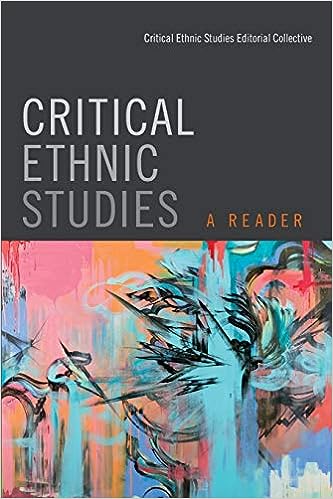
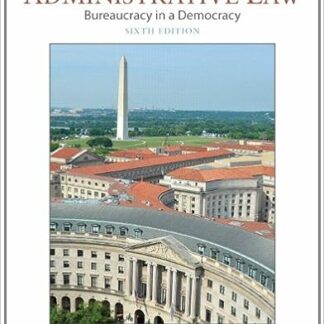
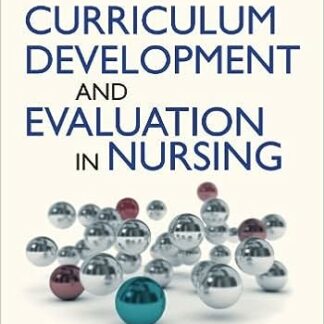
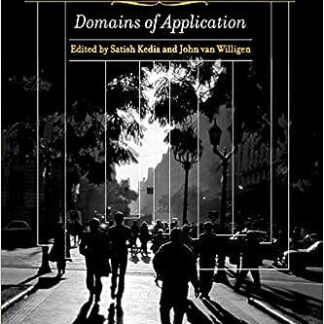
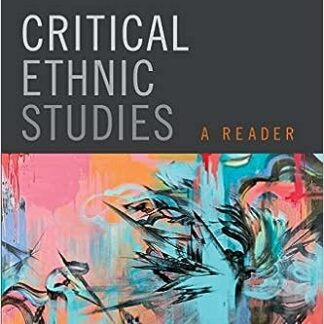
Reviews
There are no reviews yet.